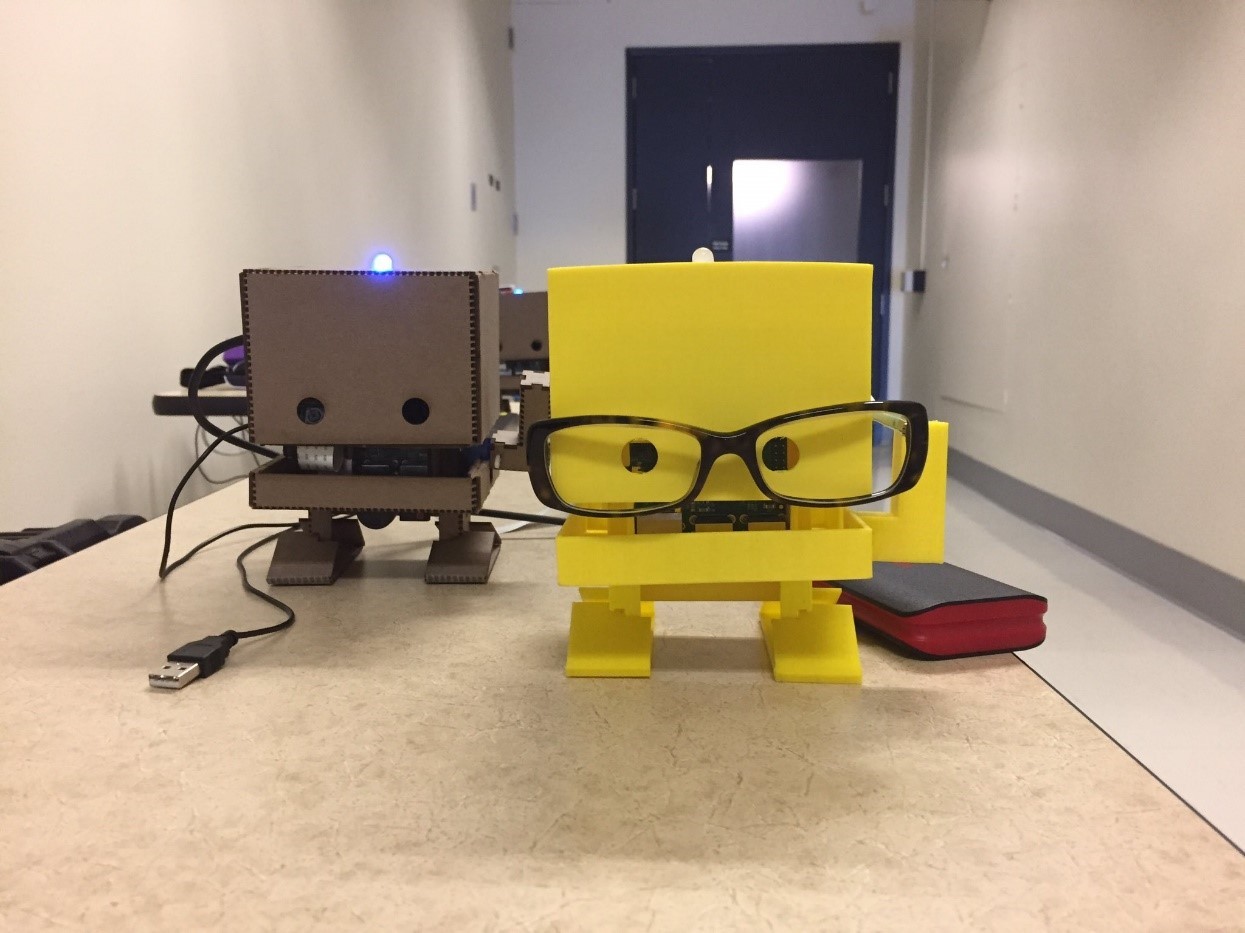TJBot: DIY robot made of cardboard under AI control, which can be assembled in 15 minutes

There are people at IBM who really like their work. Here gathered creative people, engineers, thinkers. Perhaps thanks to this tandem, the company managed to realize so many interesting projects. Now at IBM, one of the most important aspects of work is artificial intelligence, cognitive systems.
Employees of the company are trying to prove that all this is available to an ordinary developer, and not a celestial being. Everything is simple and clear. Plus, it is also very interesting. All this can be attributed to the new development of the company, a project that can even be called a hobby. This is a TJBot - cardboard robot, the assembly time of which is about 15 minutes. Manages the robot IBM Watson.
The developer who creates such a robot can program it to perform various actions. All that is required for assembly is a drawing from the Internet, cardboard, Raspberry Pi and a few additional elements. These are LEDs, servos, camera, microphone and much more - you can change and add to the set at will. All instructions and materials are available on GitHub . At the same time, stories about their own robots are also welcome - we ask you to lay out all this, if you have something to tell you about.
')
As an example, we can now talk about how to teach a robot to respond to emotions, how to control it with your own voice and how to teach it to chat.
1. Teach TJ Bot to respond to emotions . In this case, the robot changes the color of its RGB LED, responding to the manifestation of different emotions towards it. True, this is not about personal communication, but working with Twitter. To do this, you need to connect the system to the Twitter API and run the Watson Tone Analyzer to determine the emotional coloring of the message. For example, you can teach a bot to respond to messages in real time to messages from users of the microblogging service Twitter.
2. Voice control TJBot . Yes, a cute little cardboard robot is able to perform basic voice commands. For example, you can ask him to turn on the yellow light, and it will change the color of the LED to the desired one. The bot uses the Watson Speech to Text API to analyze and understand human speech.
3. Chat with TJBot . Using the three Watson APIs, you can create a talking bot that is fun to talk to. First, the Watson Speech to Text service will translate a voice into text, Watson Conversation will process the text and give the answer, and Watson Text to Speech will translate the text into audio. As a result, the bot will give a voice response to the voice request. You can chat with the bot on any topic, from the weather to your favorite TV show.
TJBot itself, despite its apparent simplicity (and it is very difficult) carries with it an important idea - embedding a weak form of AI in objects characteristic of our life, work, and study. Watson technology can be used not only to create cardboard robots. They can serve for the benefit of people, being built into gadgets, home appliances or even furniture.
As a result, a person will be able to interact with his own mirror in much the same way as an advanced device, the operation of which is provided by a neural network.
TJBot is good because both a child and an adult can work with it. A schoolboy, for example, may surprise his classmates by bringing such a system to class. An electronics student or a professional developer can create something more complicated.
If you plan to share your own experiences on the Web, try using the #TJBot tag so that other users can easily find your work.
In the meantime, the little robot says hello to everyone!
Source: https://habr.com/ru/post/400027/
All Articles